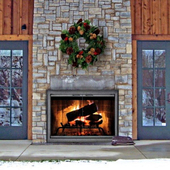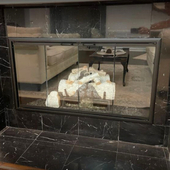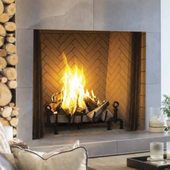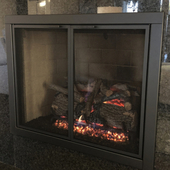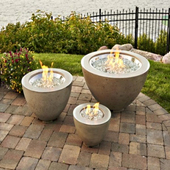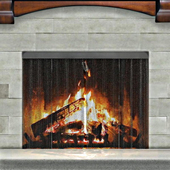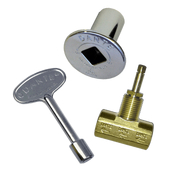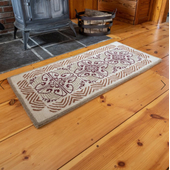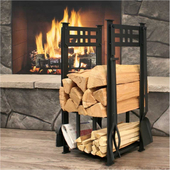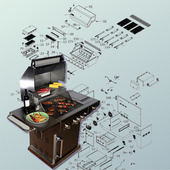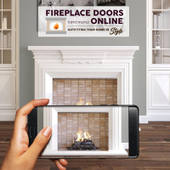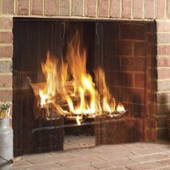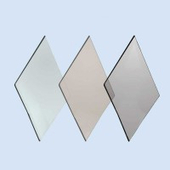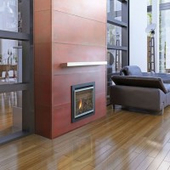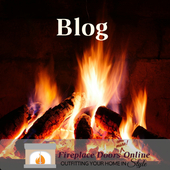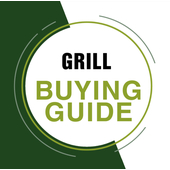Let's Talk Chimney Pipe: A Comprehensive Guide to Installation and Maintenance for a Safer and More Efficient Fireplace Experience
Embarking on a journey through the intricate world of chimney pipes is essential for homeowners and fireplace enthusiasts aiming to boost the safety and efficiency of their wood-burning stoves or fireplaces. A well-chosen, properly installed, and meticulously maintained chimney pipe is crucial for effectively channeling harmful combustion by-products out of your home, thereby ensuring a clean, safe living environment. This detailed guide aims to arm you with a thorough understanding of chimney pipes, covering everything from the selection and installation process to the essentials of ongoing care, ultimately facilitating a cozy, efficient, and secure fireplace experience.
Extended Table of Contents
Introduction to Chimney Pipes
- The Crucial Role and Functions of Chimney Pipes
- Navigating Through Different Types of Chimney Pipes
Deep Dive into Chimney Pipe Varieties
- Single-Wall vs. Double-Wall Pipes: A Comparative Analysis
- The Critical Role of Insulation: Insulated vs. Non-Insulated Pipes
- Material Considerations: Stainless Steel vs. Galvanized Steel
Installation Insights
- Emphasizing Safety First
- The Importance of Proper Sizing and Spatial Planning
- A Step-by-Step Installation Guide
Maintenance Mastery
- The Importance of Regular Chimney Inspections
- Strategies for Creosote Management
- Identifying and Rectifying Damage
Enhancing Your Chimney Pipe Knowledge
- Understanding the Dynamics of Chimney Draft
- Selecting the Right Accessories for Your Chimney Pipe
- Innovations in Chimney Pipe Technology
Troubleshooting Common Chimney Pipe Issues
- Solving Drafting Problems
- Dealing with Leaks and Moisture
- Preventing and Addressing Blockages
Advanced Maintenance Techniques
- Deep Cleaning Strategies
- Long-Term Preservation Tactics
- Professional vs. DIY Maintenance: Making the Right Choice
Legal and Regulatory Considerations
- Navigating Building Codes and Regulations
- Ensuring Compliance and Safety
Environmental Impacts and Solutions
- Eco-Friendly Practices for Wood-Burning Appliances
- Advances in Emission Reduction Technologies
Conclusion
- Summarizing Key Takeaways
- Emphasizing the Importance of Informed Decision-Making
Introduction to Chimney Pipes
When it comes to maintaining a safe and efficient fireplace or wood stove, the choice of chimney pipe can have significant implications. Chimney pipes play a crucial role in venting out the combustion by-products, ensuring that your home remains safe from potential fire hazards and toxic fumes. Understanding the differences between single-wall and double-wall pipes, the importance of insulation, and the choice of material is essential for any homeowner looking to install, upgrade, or maintain their chimney system. This article takes a deep dive into chimney pipe varieties, offering a comparative analysis to help you make informed decisions.
Single-Wall vs. Double-Wall Pipes: A Comparative Analysis
Single-Wall Pipes are the more straightforward and economical option. They consist of a single layer of metal and are generally used in less demanding installations where keeping the chimney system compact is a priority. The simplicity of single-wall pipes makes them easier to install and replace. However, their major drawback is their lower heat retention and higher surface temperature. This can pose a safety risk if not properly installed with adequate clearance from combustible materials, as the outer surface gets quite hot.
Double-Wall Pipes, on the other hand, feature an inner and outer pipe with an insulating air space between them. This design significantly reduces heat transfer to surrounding areas, making double-wall pipes a safer option, especially in homes with limited space or close proximity to combustibles. The insulation also helps maintain higher temperatures within the chimney, improving draft and reducing the buildup of creosote, a common cause of chimney fires. Although double-wall pipes are generally more expensive and might require a more complex installation, their safety and efficiency benefits are well worth the investment.
The Critical Role of Insulation: Insulated vs. Non-Insulated Pipes
Insulation in chimney pipes is all about enhancing performance and safety. Insulated Pipes are designed to keep the flue gases hot until they exit the chimney, which minimizes condensation and creosote formation. This is particularly important in colder climates or for chimneys that run outside the house where the risk of cooling is higher. Insulated pipes, often found in double-wall constructions, ensure a better draft and a cleaner, more efficient burn.
Non-Insulated Pipes, typically single-wall, might be adequate for certain conditions, especially in warmer climates or when the chimney is entirely contained within the home's heated envelope. However, they require careful installation with strict adherence to clearance codes to prevent potential fire hazards due to their high exterior temperatures.
Material Considerations: Stainless Steel vs. Galvanized Steel
The choice of material for your chimney pipe not only affects its durability and longevity but also its performance and maintenance needs.
Stainless Steel chimney pipes are renowned for their resistance to corrosion and extreme temperatures, making them an excellent choice for wood-burning stoves and fireplaces. Stainless steel's durability ensures a long-lasting chimney system that can withstand the acidic conditions created by flue gases, especially in high-efficiency appliances. While stainless steel pipes might come with a higher price tag, their resilience in harsh weather conditions and low maintenance requirements make them a cost-effective choice in the long run.
Galvanized Steel, on the other hand, is a more budget-friendly option initially. The zinc coating on galvanized steel provides a certain level of protection against rust and corrosion. However, this coating can deteriorate over time when exposed to the high temperatures and corrosive by-products of combustion, leading to a shorter lifespan and potential safety issues. Galvanized steel pipes might be suitable for gas appliances with lower flue gas temperatures but are generally not recommended for wood-burning installations where conditions are more corrosive.
In conclusion, when selecting the right chimney pipe for your home, it's crucial to weigh the benefits and drawbacks of single-wall vs. double-wall pipes, consider the importance of insulation for your specific situation, and choose a material that offers the best balance of durability, performance, and cost-effectiveness. Stainless steel double-wall insulated pipes, though more expensive upfront, offer superior safety, efficiency, and longevity, making them a wise investment for any homeowner seeking a reliable chimney system for their wood-burning appliance.
Installing a chimney system is a critical process that involves careful planning, precise execution, and a steadfast commitment to safety. Whether you're installing a new chimney for a wood stove, fireplace, or upgrading an existing one, understanding the essentials of safe installation, proper sizing, and spatial planning, along with a step-by-step guide, can ensure a successful and safe outcome. This article delves into these crucial aspects, providing homeowners and installers with valuable insights to navigate the installation process effectively.
Emphasizing Safety First
Safety is paramount when it comes to chimney installations. The potential risks of improper installation include fire hazards, carbon monoxide poisoning, and structural damage, making it crucial to adhere to stringent safety standards throughout the process. Here are key safety considerations:
- Adherence to Codes and Standards: Always comply with local building codes, national standards, and manufacturer's installation instructions. These regulations are designed to ensure the safe and efficient operation of your chimney system.
- Use of Personal Protective Equipment (PPE): Installers should wear appropriate PPE, such as gloves, safety glasses, and hard hats, to protect against injuries from sharp edges, falling debris, and other occupational hazards.
- Professional Consultation: For complex installations or if you're unsure about any aspect of the installation process, consulting with or hiring a certified chimney professional can prevent mistakes that could compromise safety.
The Importance of Proper Sizing and Spatial Planning
Selecting the right size and planning the spatial layout of your chimney system are crucial steps that significantly impact its performance and safety.
- Chimney Sizing: The diameter of the chimney pipe should match the flue outlet size of the appliance. Incorrect sizing can lead to poor draft, excessive creosote buildup, and even chimney fires. When in doubt, refer to the appliance manufacturer's recommendations and local codes.
- Spatial Planning: Consider the placement of your chimney in relation to the structure of your home and combustible materials. Maintain required clearances from rafters, walls, and other elements to prevent heat transfer and fire risks. The route of the chimney should be as straight as possible to ensure efficient airflow and easier maintenance.
A Step-by-Step Installation Guide
A methodical approach to chimney installation can help avoid common pitfalls and ensure a safe and efficient setup. While specific steps may vary based on the type of chimney and appliance, the following guide outlines the general process:
1. Preparation and Planning:
- Review all applicable codes and the manufacturer's instructions.
- Determine the chimney route, ensuring it meets clearance requirements and structural considerations.
- Gather all necessary tools and materials before beginning the installation.
2. Appliance and Chimney Base Connection:
- Position the appliance according to spatial plans, ensuring it's level and stable.
- Attach the first section of the chimney pipe to the appliance's flue outlet, using appropriate adapters if necessary.
3. Vertical and Horizontal Runs:
- For vertical installations through the roof, secure each chimney pipe section as you build upwards, using locking bands or screws as specified by the manufacturer.
- For horizontal runs, such as through a wall, ensure the chimney maintains the proper slope and is supported adequately.
4. Roof Penetration and Flashing:
- Carefully cut a hole in the roof, larger than the chimney pipe, to accommodate flashing and insulation.
- Install flashing and storm collar to prevent water ingress, following manufacturer guidelines for sealing and waterproofing.
5. Chimney Cap Installation:
- Once the chimney extends above the roofline, install the chimney cap to protect against rain, debris, and animal entry.
- Ensure the cap is securely attached and provides adequate clearance for smoke and gas venting.
6. Final Inspection and Testing:
- Conduct a thorough inspection of the entire installation for compliance with codes and standards.
- Perform a smoke test or initial firing in the presence of a qualified professional to ensure proper draft and venting.
By prioritizing safety, ensuring proper sizing and spatial planning, and following a detailed installation guide, homeowners and installers can achieve a chimney system that not only enhances the warmth and ambiance of the home but also upholds the highest safety standards. Remember, when in doubt, consulting with a certified chimney professional can provide peace of mind and ensure that your chimney installation is conducted safely and correctly.
Maintenance Mastery
Maintaining a chimney system is essential for ensuring the safety, efficiency, and longevity of your fireplace or wood stove. Regular inspections, creosote management, and timely damage repair are fundamental aspects of chimney maintenance. This article provides homeowners with insights into the best practices for maintaining their chimney, emphasizing the importance of proactive measures to prevent potential hazards.
The Importance of Regular Chimney Inspections
Regular chimney inspections are crucial for identifying issues before they escalate into serious problems. Inspections can reveal obstructions, such as bird nests or debris, creosote buildup, structural issues, and other anomalies that could impair the chimney's function or pose safety risks. The National Fire Protection Association (NFPA) recommends at least an annual inspection, which can be categorized as follows:
- Level 1: A basic inspection recommended annually for chimneys in continuous service under similar conditions and with the same appliance.
- Level 2: Required when changes are made to the system, such as a change in fuel type, changes to the shape or material of the flue, or replacement or addition of an appliance of a dissimilar type, input rating, or efficiency.
- Level 3: Recommended when serious hazards are suspected. This may involve the removal of certain components of the building or chimney to gain access.
Strategies for Creosote Management
Creosote, a byproduct of wood combustion, can accumulate on the inner walls of the chimney and pose a significant fire hazard. Managing creosote involves several strategies:
- Burning Dry, Seasoned Wood: Wet or unseasoned wood increases creosote buildup because of incomplete combustion. Always use dry, well-seasoned wood, which burns hotter and more completely.
- Maintaining Proper Airflow: Ensure the fireplace or stove receives enough air. Limited airflow can lead to incomplete combustion and increased creosote accumulation.
- Regular Sweeping: Employing a certified chimney sweep to clean your chimney at least once a year can significantly reduce creosote buildup. The frequency should increase with the amount of wood burned and the presence of visible creosote during inspections.
- Creosote Modifiers: Chemicals that modify creosote can make it less flammable and easier to remove. However, these should not replace regular mechanical cleaning.
Identifying and Rectifying Damage
Chimneys can sustain various forms of damage, from wear and tear to environmental impacts. Identifying and addressing these issues promptly can prevent more extensive and costly repairs. Key areas to monitor include:
- Structural Integrity: Look for cracks, loose bricks, or missing mortar in the masonry. These can compromise the chimney's stability and allow harmful gases to leak into the home.
- Liner Condition: The chimney liner protects the masonry from heat and corrosion. Any cracks, gaps, or signs of deterioration require immediate attention.
- Cap and Crown: The chimney cap and crown protect the chimney from water entry. Damage or wear to these components can lead to water damage, which can be extensive and costly to repair.
- Waterproofing: Applying a breathable, water-repellent treatment can protect masonry chimneys from water damage, extending their lifespan.
In summary, mastering chimney maintenance involves a comprehensive approach that includes regular inspections, effective creosote management, and prompt attention to any signs of damage. By adhering to these practices, homeowners can ensure the safe, efficient operation of their chimney system, minimizing the risk of fire and structural damage while enhancing the enjoyment of their hearth.
Enhancing Your Chimney Pipe Knowledge
Enhancing your understanding of chimney pipes not only involves knowing the different types and how they're installed but also delving into the dynamics of chimney draft, selecting the right accessories, and keeping abreast of the latest innovations in chimney pipe technology. This comprehensive knowledge ensures your chimney system operates at peak efficiency, safety, and longevity.
Understanding the Dynamics of Chimney Draft
The chimney draft is the driving force behind the effective operation of any chimney system. It refers to the flow of air from the firebox up through the chimney, which facilitates combustion and the safe expulsion of combustion byproducts. Several factors influence chimney draft, including:
- Chimney Height: Taller chimneys generally produce stronger drafts because of the greater temperature difference between the top and bottom of the chimney.
- Temperature Differential: The draft is also affected by the temperature difference between the chimney interior and the outside air. Colder external temperatures can enhance draft, while warmer temperatures might weaken it.
- Chimney Diameter: The size of the chimney flue should match the output of the fireplace or stove. An overly large flue can reduce the speed at which gases are expelled, while a too-small flue can restrict flow and lead to backdrafts.
- Obstructions and Leaks: Blockages from creosote buildup, debris, or nesting animals, as well as leaks in the chimney structure, can significantly impair draft.
Understanding these dynamics allows homeowners to troubleshoot draft issues and take steps, such as adjusting the chimney height or cleaning the flue, to optimize performance.
Selecting the Right Accessories for Your Chimney Pipe
Enhancing the functionality and safety of your chimney involves more than just the pipe itself; it requires the right accessories:
- Chimney Caps: These prevent rain, debris, and animals from entering the chimney while still allowing smoke and gases to escape. They also serve as a spark arrestor to prevent embers from landing on the roof.
- Damper Systems: Dampers control the flow of air and smoke through the chimney. A top-sealing damper, installed at the chimney's crown, offers better insulation than a traditional throat damper.
- Flue Liners: Liners protect the chimney walls from heat and corrosion and improve the chimney's efficiency by providing a smooth, insulated passage for smoke and gases.
- Chimney Brushes and Cleaning Kits: Regular cleaning is essential for maintaining draft and preventing fires. Brushes and cleaning kits designed for your specific type of chimney pipe make this task easier and more effective.
Innovations in Chimney Pipe Technology
The chimney industry continually evolves, with innovations designed to improve safety, efficiency, and environmental impact. Some notable advancements include:
- Triple-Wall Pipes: Offering superior insulation and safety, triple-wall pipes consist of three layers: an inner layer for high temperatures, an insulation layer for efficiency, and an outer layer for protection.
- Heat Reclaimer Systems: These systems capture heat from exhaust gases before they exit the chimney, redistributing it back into the room, thereby enhancing energy efficiency.
- Smart Chimney Systems: Incorporating sensors and automation, smart chimney systems monitor performance and provide alerts for cleaning or maintenance, ensuring optimal operation.
- Eco-Friendly Materials: Research into sustainable and less environmentally impactful materials for chimney construction is ongoing, aiming to reduce the carbon footprint of manufacturing and operation.
By deepening your knowledge of chimney pipe dynamics, selecting the right accessories, and staying informed about technological innovations, you can significantly enhance the safety, performance, and sustainability of your chimney system. This holistic approach ensures a more enjoyable, efficient, and responsible use of your home heating appliances.
Troubleshooting Common Chimney Pipe Issues
Addressing common chimney pipe issues is crucial for maintaining the safety, efficiency, and longevity of your chimney system. From solving drafting problems to dealing with leaks and moisture, and preventing or addressing blockages, this article provides insights and solutions to keep your chimney in top condition.
Solving Drafting Problems
Draft issues in a chimney can lead to poor combustion, smoke entering the home, and increased risk of creosote buildup. Here are some strategies to troubleshoot and resolve drafting problems:
- Increase Chimney Height: Sometimes, the chimney isn't tall enough to create a good draft. Extending the chimney can improve the draft by increasing the temperature differential.
- Install a Chimney Cap: Wind can negatively affect the draft. A specially designed chimney cap can redirect the wind and improve the updraft.
- Adjust the Flue Size: If the flue is too large for the appliance, it may not create a sufficient draft. Installing a flue liner that matches the size of the stove or fireplace outlet can help.
- Warm Up the Flue: A cold flue can hinder draft. Preheating the flue by burning a newspaper or using a hairdryer at the base before lighting the fire can help establish an initial draft.
Dealing with Leaks and Moisture
Leaks and moisture in a chimney system can cause structural damage, mold growth, and deteriorate the chimney liner. Here's how to address these issues:
- Inspect and Repair Flashing: Flashing is the seal between the chimney and roof. If it's damaged or improperly installed, water can seep in. Inspecting and repairing or replacing flashing can prevent leaks.
- Apply Waterproofing Agents: Chimney exteriors can be treated with waterproofing agents designed for masonry to prevent water absorption while still allowing the chimney to breathe.
- Ensure Proper Cap Installation: A chimney cap not only prevents debris and animals from entering but also keeps out rain and snow. Ensure your chimney cap is correctly installed and in good condition.
- Check for Condensation: Inefficient burning or a flue that's too large can lead to condensation inside the chimney, which may contribute to moisture problems. Addressing the root cause of the condensation can solve this issue.
Preventing and Addressing Blockages
Blockages in a chimney, such as bird nests, leaves, or an excessive buildup of creosote, can lead to dangerous conditions, including chimney fires and carbon monoxide intrusion. Here's how to prevent and address blockages:
- Regular Cleaning: Annual cleaning by a certified chimney sweep can remove creosote and other obstructions, ensuring the chimney is clear and safe to use.
- Install a Chimney Guard: To prevent animals and debris from entering and causing blockages, install a chimney guard or cap with a mesh screen.
- Check for Structural Issues: Sometimes, blockages can result from a collapsing flue liner or other structural problems within the chimney. A professional inspection can identify these issues, and necessary repairs can be made.
Troubleshooting common chimney pipe issues is an essential aspect of chimney maintenance. By addressing drafting problems, leaks, moisture, and blockages proactively, homeowners can ensure their chimney system operates safely and efficiently, providing peace of mind and a comfortable living environment.
Advanced Maintenance Techniques
Maintaining a chimney system requires a blend of regular upkeep, advanced cleaning strategies, and preservation tactics to ensure its long-term functionality and safety. While some maintenance tasks can be handled by homeowners, others are best left to professionals. This article delves into deep cleaning methods, strategies for the long-term preservation of your chimney, and considerations to help you decide between professional services and DIY maintenance.
Deep Cleaning Strategies
Deep cleaning a chimney goes beyond the basic sweep to remove soot and creosote; it involves thorough inspection and cleaning of all components, including the flue, damper, smoke chamber, and firebox.
- Chemical Creosote Removal: For chimneys with significant creosote buildup, especially the glazed type that's hard to remove, chemical treatments can be applied by professionals. These chemicals break down the creosote, making it easier to remove.
- Rotary Cleaning Systems: Advanced rotary cleaning systems use flexible rods and spinning heads to scrub the chimney flue's interior more effectively, reaching every nook and cranny and removing stubborn deposits.
- Smoke Chamber Parging: The smoke chamber is a common place for creosote accumulation and rough surfaces can impede efficient airflow. Parging smooths out these surfaces, improving airflow and making it harder for creosote to accumulate.
Long-Term Preservation Tactics
Preserving your chimney involves proactive measures to prevent damage and ensure its structural integrity over time.
- Waterproofing: Applying a breathable waterproofing sealant to the exterior masonry can prevent water penetration while allowing moisture to escape, protecting against freeze-thaw damage.
- Crown Repair and Maintenance: The chimney crown should be inspected for cracks or damage regularly. Repairing or replacing the crown can prevent water from entering and causing structural damage.
- Flue Liner Protection: The flue liner, crucial for protecting the chimney structure from heat and corrosion, should be inspected for cracks or deterioration. Installing a new stainless steel liner or repairing the existing one can extend the life of your chimney.
Professional vs. DIY Maintenance: Making the Right Choice
Deciding between professional and DIY maintenance involves considering the task's complexity, safety concerns, and the potential for hidden issues that a professional might better identify.
- Safety First: Chimney maintenance can be hazardous, involving working at heights and handling potentially harmful substances like creosote. Professionals have the training, experience, and equipment to do the job safely.
- Complex Inspections: Professionals use advanced tools like video inspection equipment to examine the flue lining and other parts of the chimney for damage that isn't visible from the outside.
- Regulatory Compliance: Professional chimney sweeps are familiar with local building codes and regulations, ensuring that your chimney system complies with safety standards.
While some tasks like basic cleaning of the hearth or the exterior of the chimney can be DIY, it's advisable to leave the more complex, dangerous tasks to professionals. Annual inspections should always be conducted by certified professionals who can provide a comprehensive evaluation of your chimney's condition and perform any necessary repairs.
Legal and Regulatory Considerations
When it comes to chimney maintenance and installation, understanding and adhering to legal and regulatory considerations are crucial for homeowners and contractors alike. Navigating building codes and ensuring compliance not only guarantees safety but also prevents potential legal complications. This article will explore the essential aspects of building codes and regulations related to chimney systems, offering insights into how to ensure your chimney meets the required standards.
Navigating Building Codes and Regulations
Building codes and regulations are established to ensure the safety, health, and general welfare of the public. They encompass various aspects of construction and maintenance, including structural integrity, fire safety, and environmental concerns. When it comes to chimneys, these regulations cover installation, maintenance, and repair practices.
- Local vs. National Codes: Building codes can vary significantly from one jurisdiction to another. While national codes provide a baseline (such as the International Residential Code (IRC) in the United States), local amendments and regulations can add additional requirements. It's essential to consult local building departments to understand the specific codes applicable to your area.
- Permit Requirements: Most local jurisdictions require permits for chimney installations or significant repairs. This process ensures that the proposed work meets local building codes and is inspected upon completion. Skipping this step can lead to fines and the requirement to redo non-compliant work.
- Professional Certification: Many regions require that individuals performing chimney work be certified or licensed. This requirement ensures that professionals have the necessary knowledge and skills to comply with building codes and safety standards.
Ensuring Compliance and Safety
Ensuring that your chimney system complies with local building codes is not just a legal necessity but a critical safety measure. Here are key steps to ensure compliance and maintain the highest safety standards:
- Hire Qualified Professionals: Employing certified professionals for chimney installation, maintenance, and repair is one of the most straightforward ways to ensure compliance. Look for credentials from recognized associations like the Chimney Safety Institute of America (CSIA) in the U.S. or similar bodies in other countries.
- Regular Inspections and Maintenance: Adhering to recommended inspection and maintenance schedules can prevent compliance issues before they arise. Professional chimney sweeps conduct thorough inspections that can identify non-compliance and safety issues early on.
- Stay Informed: Regulations and codes can change, so it's important for homeowners and professionals to stay informed about the latest standards and practices. This can involve attending relevant training sessions, workshops, or subscribing to updates from local building departments or professional associations.
Legal Implications of Non-Compliance
Failing to comply with building codes and regulations can have serious legal and financial consequences. Beyond the immediate risks to safety, non-compliance can result in fines, invalidate insurance claims, and even lead to legal action in the event of a fire or accident linked to a non-compliant chimney system.
In summary, navigating the legal and regulatory landscape is a critical component of responsible chimney ownership and maintenance. By understanding and adhering to local building codes, employing qualified professionals, and staying informed about changes in regulations, homeowners can ensure their chimney systems are safe, compliant, and efficient. Remember, compliance is not just about meeting legal requirements; it's about ensuring the safety and well-being of occupants and the broader community.
In conclusion, advanced chimney maintenance involves a combination of deep cleaning techniques, preservation strategies to protect the structure over the long term, and a judicious approach to deciding between professional and DIY maintenance tasks. By adopting these advanced maintenance practices, homeowners can ensure their chimney system remains safe, efficient, and durable for years to come.
Environmental Impacts and Solutions
The conversation around wood-burning appliances, including fireplaces and stoves, often centers on their cozy ambiance and heating efficiency. However, it's crucial to address their environmental impact, particularly in terms of air pollution and deforestation. This article delves into the environmental implications of wood-burning appliances and highlights innovative solutions and eco-friendly practices designed to mitigate these impacts, focusing on emission reduction technologies and sustainable practices.
Environmental Impacts of Wood-Burning Appliances
Wood-burning appliances, while traditional and popular for their warmth, contribute significantly to air pollution. The combustion process releases a variety of pollutants, including particulate matter (PM2.5), carbon monoxide (CO), volatile organic compounds (VOCs), and nitrogen oxides (NOx), which can harm air quality and public health. Additionally, inefficient combustion can lead to higher emissions and increased fuel consumption, exacerbating the problem.
- Air Quality Concerns: Particulate matter from wood smoke can penetrate deep into the lungs, causing respiratory issues, aggravating heart and lung diseases, and even leading to premature death. It also contributes to smog formation, affecting both urban and rural air quality.
- Carbon Footprint: Although wood is a renewable resource, the carbon neutrality of wood burning is a complex issue. The immediate release of carbon dioxide during combustion and the slow process of carbon re-sequestration by new growth can contribute to increased atmospheric CO2 levels in the short term.
- Deforestation and Habitat Loss: Unsustainable wood harvesting for fuel can lead to deforestation, loss of biodiversity, and habitat destruction, further exacerbating environmental issues.
Eco-Friendly Practices for Wood-Burning Appliances
Adopting eco-friendly practices is crucial to minimizing the environmental impact of wood-burning appliances. Here are some strategies:
- Seasoned Wood: Using dry, seasoned wood can significantly reduce smoke emissions. Wet wood leads to incomplete combustion, more smoke, and higher pollutant levels.
- Efficient Burning Practices: Techniques like starting fires with clean newspaper and dry kindling, maintaining a hot, bright flame, and avoiding smoldering can reduce emissions.
- Regular Maintenance: Keeping the chimney clean and ensuring the appliance is in good working order improves combustion efficiency, thereby reducing emissions.
Advances in Emission Reduction Technologies
Technological advancements have paved the way for cleaner, more efficient wood-burning appliances. These innovations aim to reduce emissions while maintaining or improving heating efficiency:
- Advanced Combustion Stoves: Modern stoves are designed to achieve complete combustion, significantly reducing emissions. Technologies like catalytic converters and secondary combustion systems help burn off gases and particulates that would otherwise be released into the atmosphere.
- Pellet Stoves and Boilers: Pellet fuel is made from compressed biomass, offering a cleaner-burning alternative to traditional wood logs. Pellet stoves and boilers are designed for high efficiency and low emissions, providing a more sustainable option for wood fuel heating.
- EPA-Certified Appliances: In many countries, environmental agencies set emissions standards for wood-burning appliances. EPA-certified stoves, for example, meet strict guidelines for particulate emissions, making them a more environmentally friendly choice.
Looking Ahead: The Future of Eco-Friendly Wood Burning
The future of eco-friendly wood burning lies in continued innovation and widespread adoption of best practices and technologies. Investment in research and development of cleaner combustion technologies, coupled with public education on eco-friendly practices, can significantly mitigate the environmental impact of wood-burning appliances. Furthermore, policy measures, such as incentives for upgrading to cleaner appliances and regulations limiting emissions from residential wood burning, can accelerate the transition to more sustainable practices.
In conclusion, while wood-burning appliances present certain environmental challenges, a combination of eco-friendly practices and advances in technology offers a path toward minimizing their impact. By embracing cleaner fuels, efficient burning techniques, and modern, low-emission appliances, users can enjoy the warmth and ambiance of wood burning in an environmentally responsible manner.
Conclusion
In this comprehensive exploration of chimney pipes and wood-burning appliances, we've delved into various aspects essential for homeowners, from installation and maintenance to environmental considerations and regulatory compliance. Through a series of focused discussions, we have aimed to provide a well-rounded understanding that emphasizes safety, efficiency, and environmental stewardship.
Key Takeaways
- Installation and Maintenance: The importance of correct installation cannot be overstated, as it ensures the safe and efficient operation of wood-burning appliances. Regular maintenance, including chimney inspections and creosote management, is crucial for preventing fires and prolonging the lifespan of the chimney system.
- Environmental Impact: While wood-burning appliances offer a cozy and traditional heating method, they also pose environmental challenges, particularly concerning air quality and deforestation. Embracing eco-friendly practices and advanced emission reduction technologies is vital for minimizing the ecological footprint of wood burning.
- Regulatory Compliance: Navigating the legal landscape, including adherence to building codes and regulations, is essential for ensuring safety and avoiding legal pitfalls. Staying informed about local and national standards can help homeowners maintain compliance and enhance the safety of their installations.
- Innovation and Technology: The ongoing development of cleaner, more efficient wood-burning technologies and chimney systems represents a promising avenue for reducing the environmental impact of these appliances. Innovations such as advanced combustion stoves and EPA-certified appliances highlight the industry's commitment to sustainability.
Moving Forward
As we look to the future, the balance between enjoying the warmth and tradition of wood-burning appliances and addressing environmental concerns becomes increasingly crucial. Homeowners and industry professionals alike must stay informed about best practices, technological advancements, and regulatory changes to ensure that wood burning remains a viable, safe, and environmentally responsible heating option.
The journey toward safer, more efficient, and eco-friendly wood burning is ongoing, and it requires the collective effort of manufacturers, regulators, and users. By prioritizing education, compliance, and innovation, we can continue to enjoy the benefits of wood-burning appliances while minimizing their impact on our health and the environment.
In conclusion, the comprehensive understanding of chimney pipes and wood-burning appliances presented in this series serves as a testament to the complexity and importance of this subject. It underscores the need for continued vigilance, education, and innovation to ensure that the cozy glow of a wood fire remains a cherished and sustainable comfort in homes around the world.
Frequently Asked Questions
Q: Can I install a chimney pipe myself?
A: While some experienced homeowners can install chimney pipes, it's recommended to hire a professional for safety and compliance reasons.
Q: How often should I clean my chimney pipe?
A: Schedule a professional cleaning annually, or more frequently if you notice significant creosote buildup.
Q: Can I use a single-wall pipe inside my house?
A: It's generally safer to use double-wall (insulated) pipes inside your home to minimize heat transfer to combustible materials.
Q: What's the lifespan of a chimney pipe?
A: Stainless steel chimney pipes can last 15-20 years or more, while galvanized steel pipes have a shorter lifespan due to potential corrosion.
Q: How can I prevent creosote buildup?
A: Burn only well-seasoned hardwood, maintain a hot fire, and avoid slow-burning fires to reduce creosote formation.
Remember that proper installation and maintenance are essential for the safe and efficient operation of your chimney pipe. When in doubt, consult with professionals who specialize in chimney systems to ensure the safety of your home and family.












